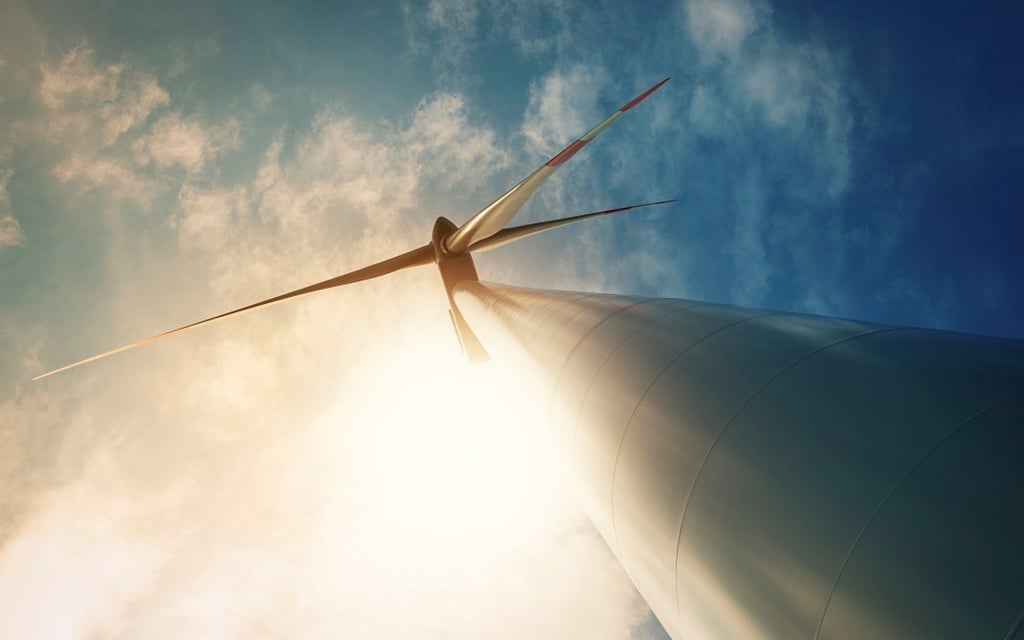
Photo of an electrical grid on Nov. 5, 2013. (Photo courtesy of the U.S. Department of Energy)
WASHINGTON – Tucson is exploring a transition to a publicly-owned electric utility, as customers complain about high bills and the city aims to cut its carbon footprint.
Tucson Electric Power’s contract will expire in April 2026. The city recently hired an outside firm to assess the economics and regulatory hurdles of taking over by forming its own power utility.
“This feasibility study is another pathway of, what does the future of Tucson’s energy look like?” said Tucson resident Nick Arnold, a board member of the Sierra Club Nopales Group. “TEP is not operating as the act that will get us there as quickly as we need to.”
The study is one step in the city’s climate action plan, known as Tucson Resilient Together. The City Council declared a climate emergency in 2020, and set a goal for city operations to become carbon neutral by 2030, and for community-wide neutrality by 2045.
Although electricity rates in Tucson are about 4% below the national average, the average residential bill – $228 a month – is 20% higher than average, according to solar company EnergySage, thanks largely to the heat and use of air conditioning.
Residential rates in the U.S. range from 6 cents to 71 cents per kilowatt hour (kWh). The average in Tucson is 17 cents/kWh, the company’s data shows. That’s about average for Arizona.
One reason cities look to publicly-owned utilities is the hope of trimming costs for customers.
Nationwide, bills from public utilities were 7% lower in 2022 on average than from investor-owned utilities, according to the American Public Power Association.
Tucson Electric Power officials say the company already provides cleaner energy, with an “aspirational goal” to reduce carbon emissions by 80% by 2035 and reach net zero emissions by 2050. Tucson would achieve its objectives sooner and more cheaply by sticking with TEP, the company asserts.
“We feel we’re providing a great service to our customers and we don’t take our responsibility to them lightly,” said spokesperson Joseph Barrios.
The cost of acquiring TEP’s assets would present “a real challenge to the city’s finances,” he added.
The company’s assets were worth $7 billion in 2023, according to an annual 10K report filed with the Securities and Exchange Commission. TEP is not publicly traded but its parent company is: Fortis, based in Canada, serves more than 3 million customers, about a sixth of them in Arizona.
TEP reported $259 million in profit in 2023, up $42 million from 2022. The company told the SEC that the main drivers of the revenue boost were a recent rate increase and “higher usage as a result of favorable weather” – as in, a blazing hot summer led people to use more electricity.
The state has 36 public power agencies. But public takeovers of a local utility are challenging.
Voters in Boulder, Colorado, ended a decade-long municipalization effort in 2020 that began with high hopes for speeding a transition to cleaner power. The city ended up spending nearly $29 million in a prolonged fight with Xcel Energy before dropping the effort, though officials took credit for prodding the company to speed its reduction of greenhouse gas emissions.
“Those new resources aren’t free,” Barrios said. “Someone has to pay for them and investing in those systems requires significant capital.”
In 2023, 27% of Tucson’s power came from solar and wind, according to TEP, including 7% from private solar arrays. The company projects that such sources will account for 54% of power generation by 2038.
The company is planning two solar energy storage systems. One will go online in 2025, the other in 2027. It’s also expanding its use of solar arrays to convert Tucson’s intense sunlight to power.

A low angle photo of a wind turbine on June 19, 2012. (Photo courtesy of the U.S. Department of Energy)
As renewable energy has become more cost-effective, TEP and other utilities have been phasing out older technologies that generate heat-trapping carbon dioxide.
The company has planned for several years to shutter two remaining coal-fired plants in Springerville, about 250 miles from Tucson, in 2027 and 2032, according to its 2023 resource plan. But it’s still adding turbines powered by natural gas, which also produces CO2, though less than coal does.
Shelly Gordon, state director of the advocacy group Arizonans for Community Choice, said it makes no sense to expand investment in gas generation if the goal is to become carbon neutral.
“It’s unlikely that Tucson would want to take over those gas plants because they want more renewable energy in the mix,” she said.
TEP increased monthly rates by $11 last September to cover investment costs. It cut bills by $10 per month in June, and added a temporary $6 reduction in July.
“We understand the importance of keeping our rates affordable, so we’re pleased to pass along these savings now to help reduce that traditional summer bill impact,” said Susan Gray, TEP’s president and CEO, in a press release announcing the summertime rollbacks.
The city is also exploring community choice aggregation programs, or community choice energy. The city would buy power from providers other than TEP, though the company would still own the poles and wires and deliver it to customers.
Such programs can increase the share of green power, according to the Environmental Protection Agency.
“The city is not making a profit on it,” Gordon said. “They can price it however they want.”
Competition among suppliers could bring down kWh prices, though choice programs can also entail higher costs for customers. Some green advocates are fine with that, if that’s what it takes to hit climate goals.
Cost isn’t the only factor, said the Sierra Club’s Arnold. There’s also “all the public health costs and the impacts to our environment that fossil fuel pollution causes.”
Tucson’s feasibility study will also analyze the potential for solar service agreements; virtual power purchase agreements, under which the city would buy power from a renewable energy project at a predetermined price; and solar microgrids, which are small systems that can operate independently from the power grid.
The city has not announced a deadline for the study’s completion. Nor has it disclosed how much it is spending on the study.
Tucson would need approval from the Legislature to implement a community choice program or to force TEP to sell its assets to a new municipal utility, Gordon said.
But she is optimistic the ideas will gain traction among lawmakers in both parties.
Democrats generally embrace action to combat climate change, she said, and “Republicans are in favor of energy competition.”

